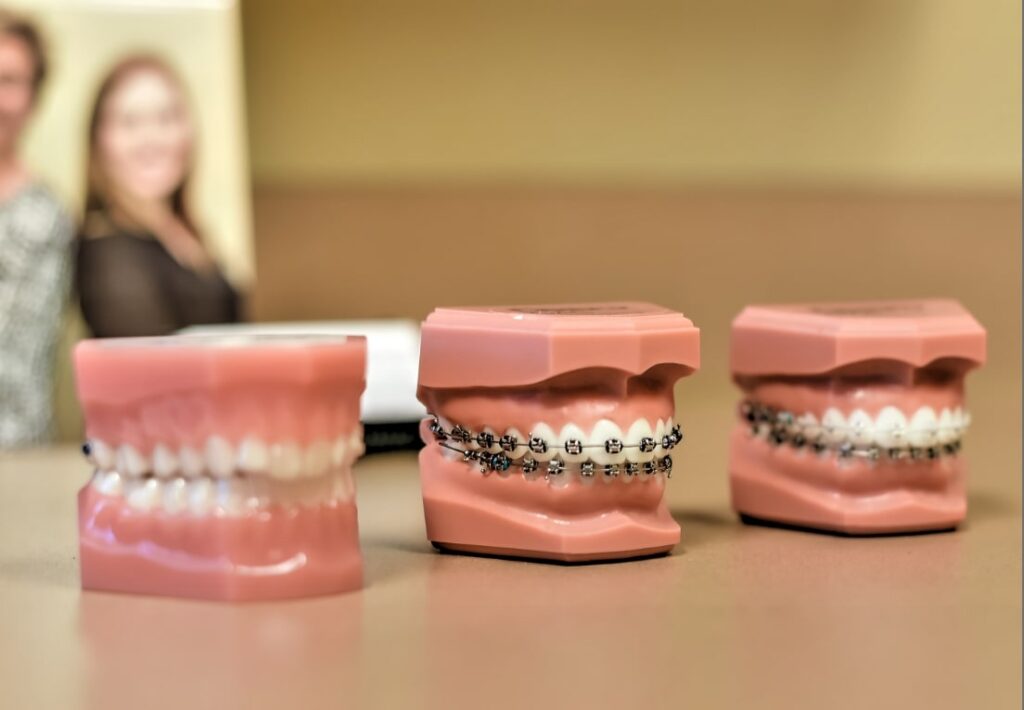Comprehensive Guide to Orthodontics Procedures for Dealing With Dental Imbalances
Comprehending the intricacies of each procedure, including their systems, benefits, and potential drawbacks, is vital in making informed choices concerning one's orthodontic therapy. As we navigate through the thorough overview to orthodontic treatments for fixing dental misalignments, the elaborate information of each approach will certainly unfold, shedding light on the path towards a unified and functional oral positioning.
Orthodontic Procedures Summary

In addition to clear aligners and standard braces, orthodontists might also suggest various other interventions like headgear, palatal expanders, or retainers to attend to specific placement issues (orthodontics). These procedures are customized to every person's distinct demands and may include a mix of treatments to accomplish the preferred outcomes. Routine adjustments and tracking are critical parts of orthodontic therapy to make sure development gets on track and to make any necessary alterations along the way. By going through orthodontic treatments, patients can not only accomplish a straighter grin yet likewise enhance their total dental health and function.
Conventional Dental Braces: Just How They Function
When considering orthodontic therapies for dental misalignments, traditional dental braces stick out as a time-tested approach for remedying teeth placing. Standard braces include brackets, cords, and bands that interact to use continual pressure on the teeth, gradually relocating them into the wanted positioning. The braces are connected to the teeth making use of a special adhesive, and the cords are threaded with the braces. By changing the stress of the cords, orthodontists can manage the direction and force put on each tooth, directing them right into proper placement with time.
One key aspect of how traditional braces job is the procedure of bone remodeling. As stress is used to the teeth via the braces, the bone bordering the teeth is reshaped to support the brand-new tooth settings. This improvement is necessary for the long-term stability of the remedied positioning. Individuals will certainly require regular adjustments at the orthodontist's office to ensure the dental braces remain to apply the right pressure for efficient teeth motion.
Unnoticeable Aligners: Cons and pros
Unseen aligners offer a practical and discreet option to typical dental braces for remedying oral misalignments. These clear, customized trays are practically invisible when worn, making them an appealing alternative for people seeking a more aesthetically pleasing orthodontic treatment. One of the key advantages of invisible aligners is their removability, enabling simpler maintenance of oral hygiene contrasted to standard braces. Individuals can get rid of the aligners prior to consuming or brushing their teeth, reducing the risk of food obtaining stuck in the home appliance and simplifying the cleansing process.

Surgical Orthodontic Options
Surgical interventions in orthodontics present practical choices for attending to complicated oral imbalances that may not be efficiently dealt with via conventional orthodontic treatments. While undetectable aligners and standard dental braces can remedy many orthodontic problems, specific situations require surgical treatment to attain optimum results. Surgical orthodontic choices are normally advised for serious malocclusions, considerable jaw discrepancies, and cases where the underlying bone framework requires alteration to achieve correct positioning.
One typical surgical orthodontic treatment is orthognathic surgical procedure, which involves rearranging the jaws to remedy functional problems such as trouble speaking or chewing. This surgery is often executed in partnership with an orthodontist who aids line up the teeth prior to and after the procedure. Surgical orthodontics may additionally include procedures to subject influenced teeth, eliminate excess gum tissue, or reshape the jawbone to create an extra harmonious face profile.
Prior to considering surgical orthodontic alternatives, individuals undergo a thorough examination to identify the need and potential advantages of such interventions. invisalign. While surgery might appear challenging, it can considerably improve both the feature and aesthetic appeals of the smile in cases where standard orthodontic treatments fall short
Retainers and Post-Treatment Care

Failure to conform with post-treatment care instructions can result in relapse, where the teeth gradually relocate back towards their original positions. Consistent retainer wear, good oral health, and normal dental examinations are crucial for keeping the results accomplished with orthodontic surgical treatment and guaranteeing the long-term stability of the dealt with oral positioning.
Final Thought
In conclusion, orthodontic treatments use numerous options you can try here for fixing dental misalignments. Surgical orthodontic options are offered for more serious misalignments. Overall, orthodontic procedures can properly improve oral health and wellness and visual appearance.
As we navigate through the extensive overview to orthodontic treatments for fixing oral misalignments, the complex information of each method will certainly unravel, losing light on the course towards a useful and harmonious dental placement. - orthodontics
One of the most usual orthodontic therapies is the usage of braces, which consist of metal braces and cords that where do dentists work apply gentle pressure to gradually move teeth right into the preferred position.When thinking about orthodontic therapies for oral imbalances, traditional braces stand out as a tried and true approach for fixing teeth positioning. Additionally, undetectable aligners might not be ideal for intricate orthodontic issues that require more considerable teeth motion, as they are commonly recommended for moderate to modest cases. Retainers are tailor-made orthodontic devices made to hold teeth in their fixed settings after the completion of orthodontic treatment.